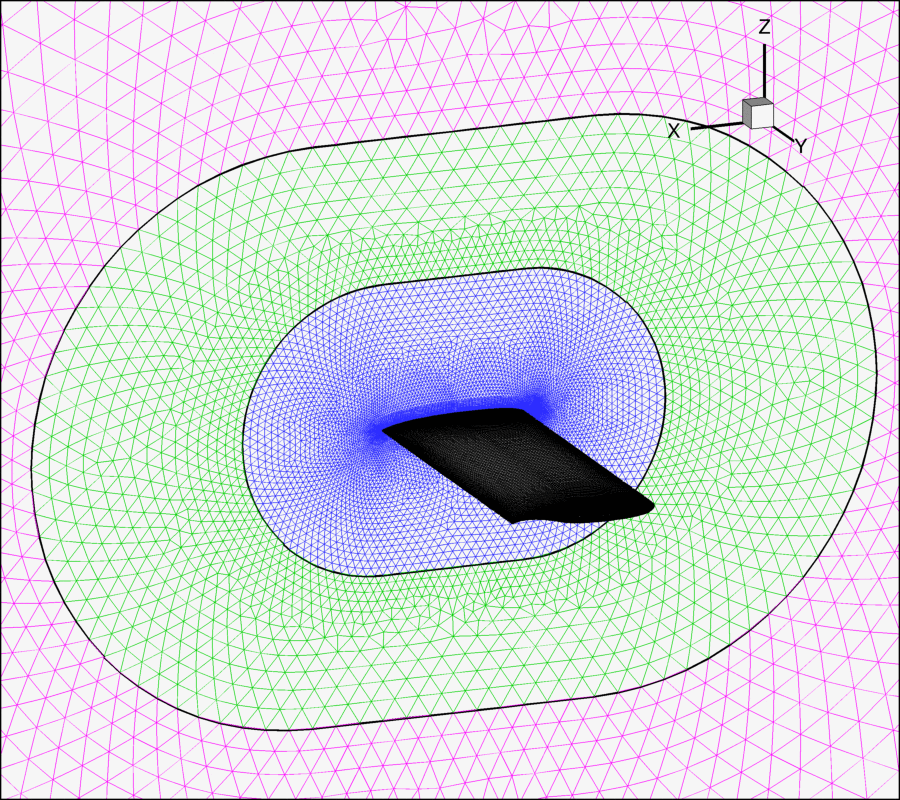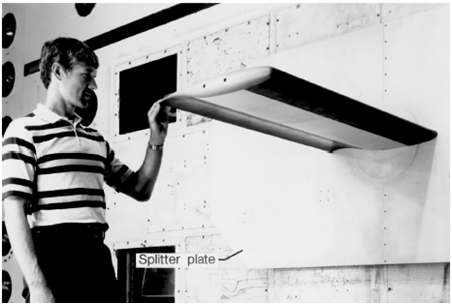Results from AePW
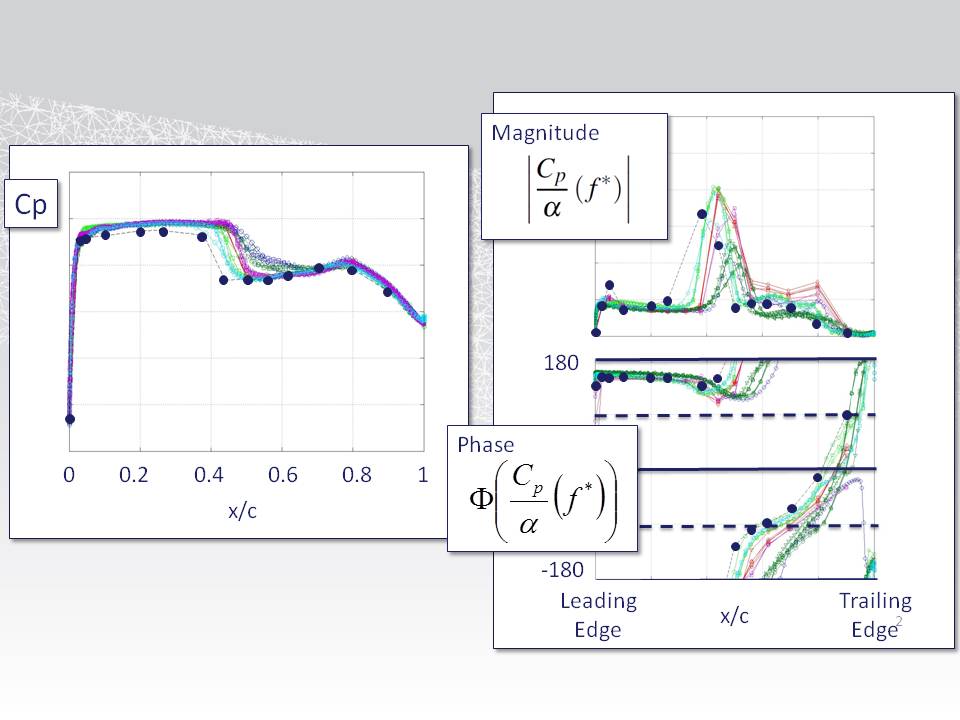
The results generated by the analysis teams are described and assembled into a MATLAB database. These results are compared with the experimental data. The principal results are unforced system pressure distributions and frequency response function magnitude and phase diagrams at the excitation frequencies.
AePW Selection Rationale
The Rectangular Supercritical Wing (RSW) was chosen as the first configuration to study due to its geometric simplicity, perceived simple flow field at transonic conditions and availability of an experimental data set containing forced oscillation response data.
Wind Tunnel Model The RSW model has a simple, unswept, rectangular, 24- x 48-inch planform with a wing tip of revolution and a constant 12-percent-thick supercritical airfoil section. A photograph of the model installed in the TDT is shown above in the Experimental Data box. The model was mounted on the TDT east wall to a relatively small, 48- x 98-inch splitter plate, which offset the model 6 inches from the wall. The model was designed to be structurally rigid, with a first bending mode frequency of 34.8 Hz. Model instrumentation included 4 chordwise rows of unsteady pressures at span stations 0.309, 0.588, 0.809, and 0.951 (with 29 pressures per chord), 8 accelerometers, and 1 potentiometer. For most of the wind-tunnel test, flow transition was free; however, a few points were measured with a transition strip of size 60 grit affixed at 6-percent chord on both the upper and lower surfaces.
Wind Tunnel Test Matrix For the RSW test in the TDT, data was acquired in an R-12 test medium at Mach numbers ranging from 0.40 to 0.90, dynamic pressures (q) of 175 to 215 psf, and angles of attack from -1 to 7 degs. Steady data was obtained with the model held at a fixed angle of attack. Dynamic data was acquired via forced oscillation of the model in pitch about the 46-percent chord location with a shaft-driven rotary hydraulic actuator. Pitch frequencies of 5, 10, 15, and 20 Hz were tested at amplitudes ranging from 0.50 to 1.50 degs.
Computations and Results Summary Six teams performed analyses of the RSW; they used Reynolds-Averaged Navier-Stokes flow solvers exercised assuming that the wing had a rigid structure. Both steady-state and forced oscillation computations were performed by each team. The results of these calculations were compared with each other and with the experimental data. The steady-state results from the computations capture many of the flow features of a classical supercritical airfoil pressure distribution. The most dominant feature of the oscillatory results is the upper surface shock dynamics. Substantial variations were observed among the computational solutions as well as differences relative to the experimental data. Contributing issues to these differences include substantial wind tunnel wall effects and diverse choices in the analysis parameters.
Recommended Reading and Reference Information for RSW
Due principally to the complexities introduced by the closeness of the wind tunnel model to the wind tunnel wall, analysis of this configuration has been generally closed out. A lengthy summary paper including analysis of the experimental data and comparison with the computational results was presented at the 2013 AIAA Aerospace Sciences Meeting in Grapevine Texas. Lessons learned in the selection and development of test cases for the Aeroelastic Prediction Workshop: Rectangular Supercritical Wing and the accompanying Presentation slides. Historical references RSW Workshop presentations
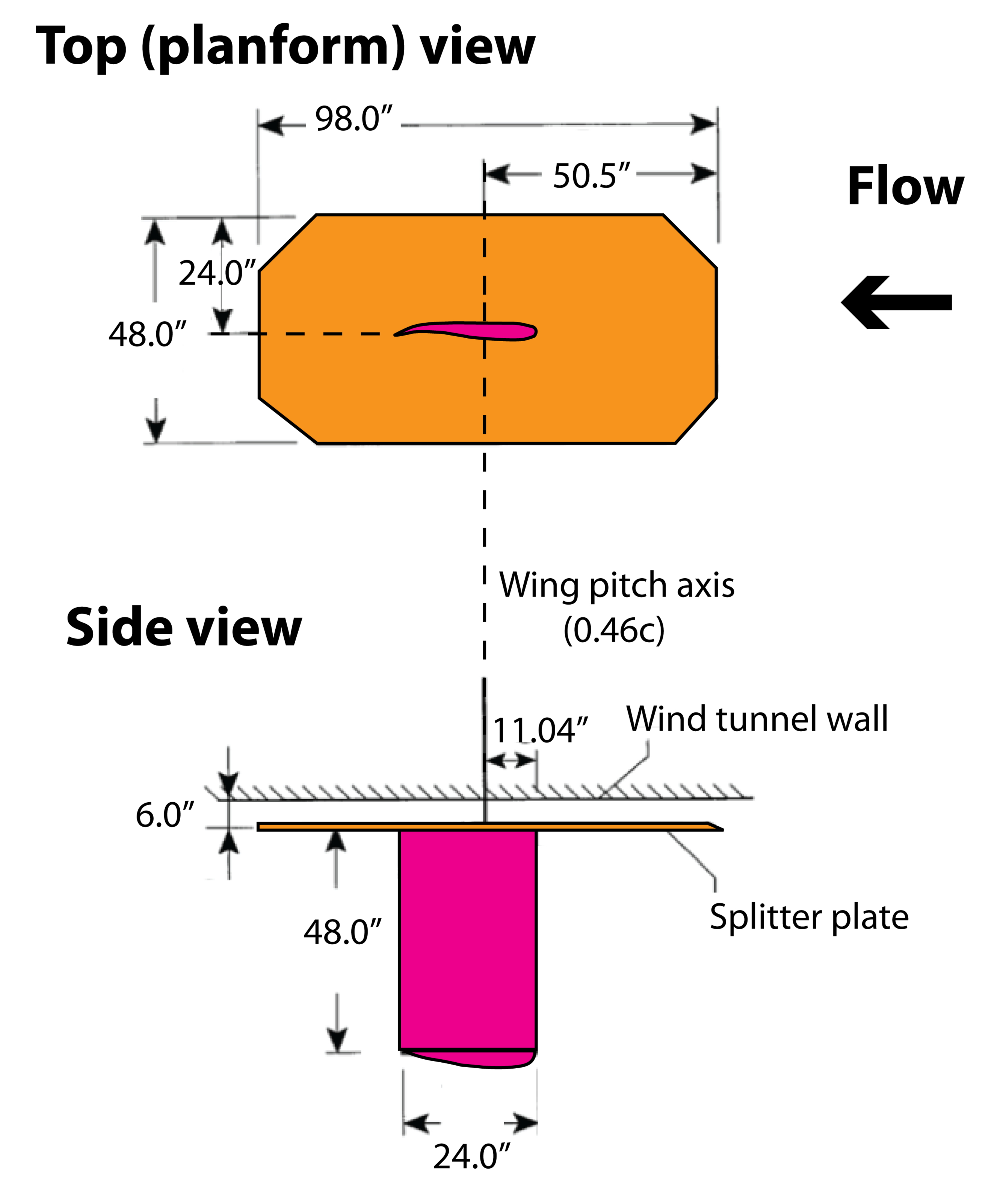
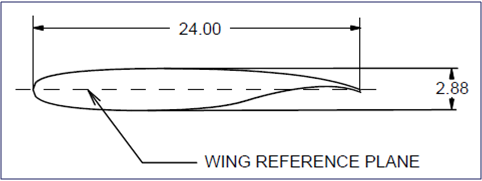
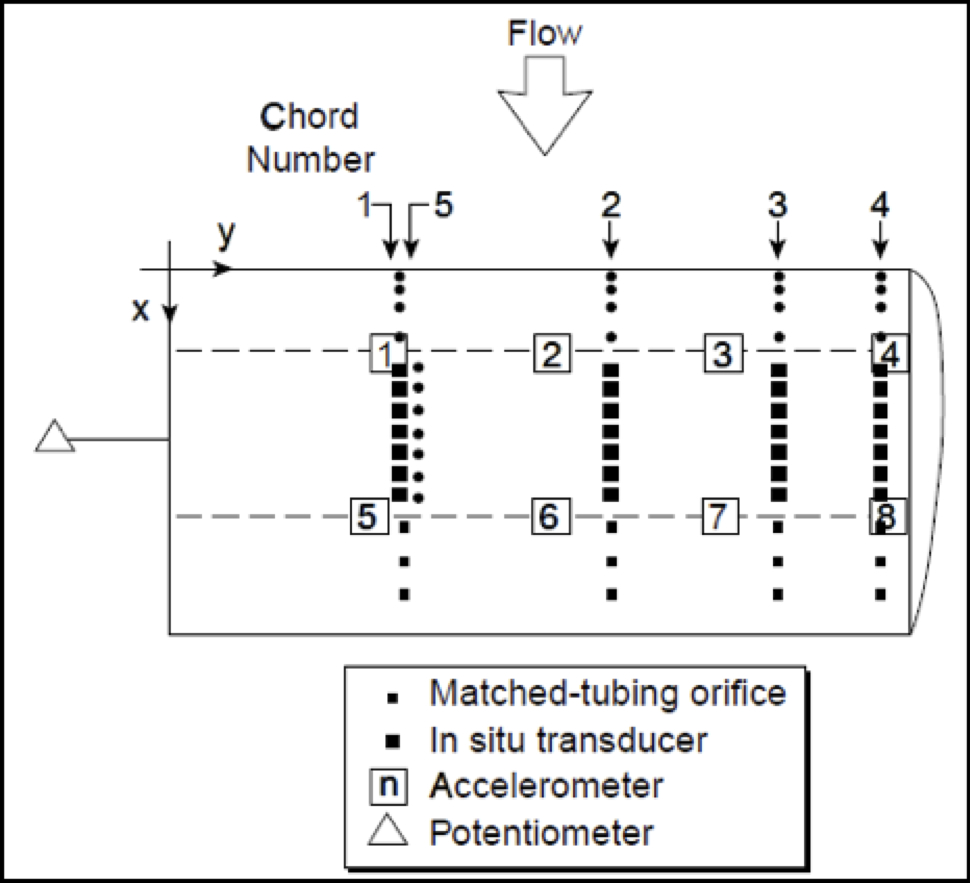
Publications and Presentations
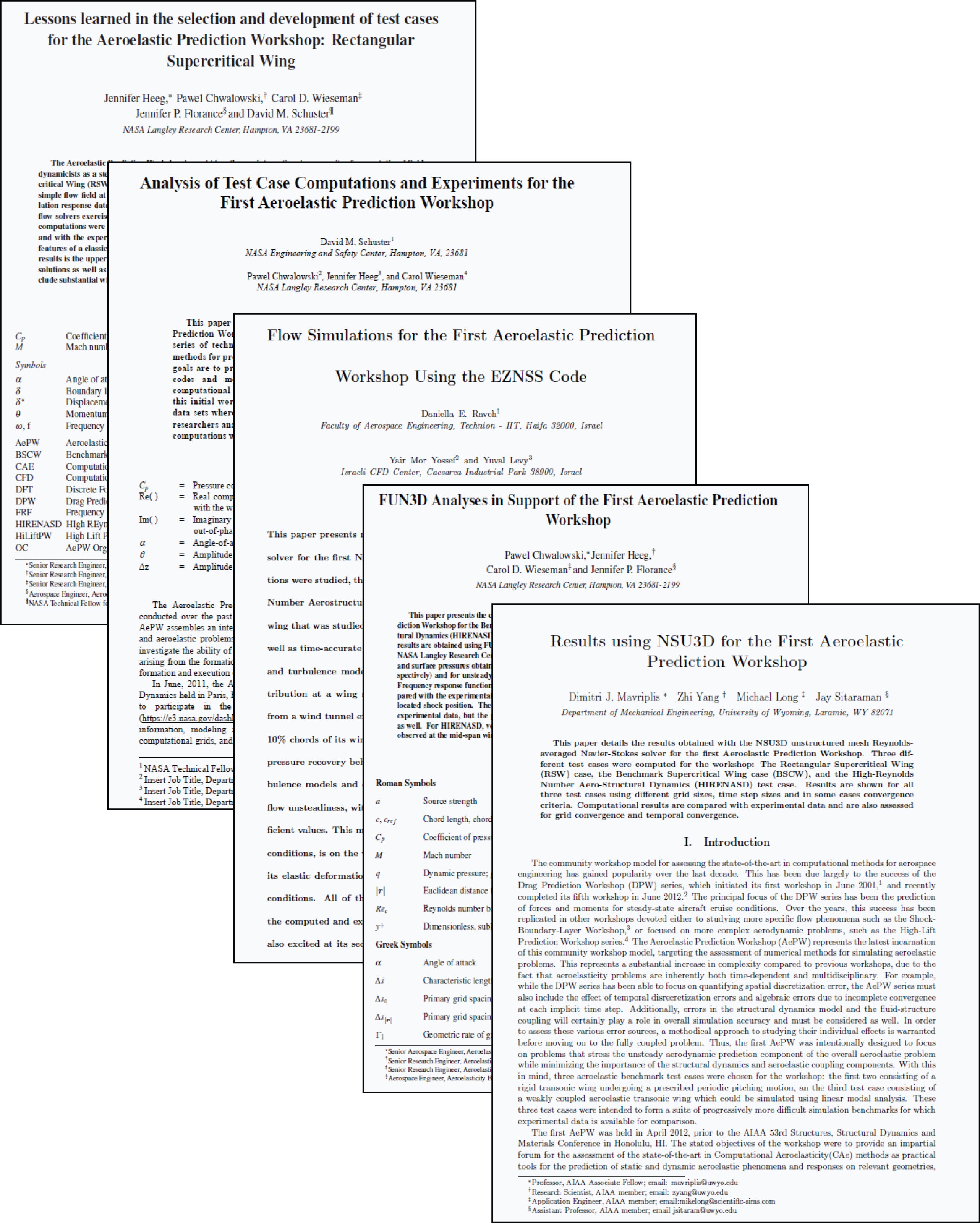
Lessons learned in the selection and development of test cases for the Aeroelastic Prediction Workshop: Rectangular Supercritical Wing A summary paper including analysis of the experimental data and comparison with the computational results was presented at the 2013 AIAA Aerospace Sciences Meeting in Grapevine Texas. and the accompanying Presentation slides.
Geometrical and Properties of a Rectangular Supercritical Wing Oscillated in Pitch for Measurement of Unsteady Transonic Pressure Distributions; Ricketts, Watson, Sandford and Seidel - Nov 1983 (Ricketts)
AIAA-JA_vol21_no8.pdfTransonic Pressure Distributions on a Rectangular Supercritical Wing Oscillating in Pitch; Ricketts, Sandford, Seidel, Watson, Journal of Aircraft, Vol 21 No 8, 1983
1999046117.pdfComputational Test Cases - early RSW (Ricketts - in RTO publicaton) - Complete results are in NASA TM 85765 - Subsonic and Transonic Unsteady- and Steady-Pressure Measurements on a Rectangular Supercritical Wing Oscillated in Pitch by Ricketts, Sandford, Watson
